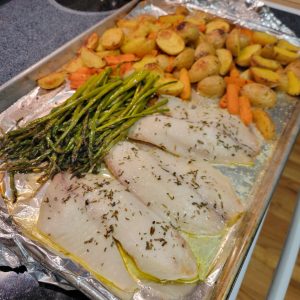
Happy New Year! A New Year’s resolution is a promise you make to yourself to start doing something good or stop doing something bad on the first day of the year. According to various sources, success rates vary from 9% to 46% for 6 months. That’s a large range. Let’s face it most of us don’t keep strictly to our resolutions if we do make them. If the idea of making a New Year’s resolution fills you with dread, don’t make one. No one has to know. A popular resolution for most people is to eat healthier.
To meet that goal, be an informed shopper and use food labels to your advantage by comparing products to choose the foods and beverages that will help you build a healthier diet. Understanding the Nutrition Facts label on food items can help you make better choices. The label breaks down the number of calories, carbs, fat, fiber, protein, and vitamins per serving of the food, making it easier to compare the nutrition of similar products. Be sure to look at different brands of the same foods—nutrition information can differ a lot. For example, one brand of tomato sauce may have more calories and sugar than another brand for the same serving size. Notice how many calories are contained in one serving. The serving size is not a suggestion of how much to eat, just how much to count. If you eat two servings, you double the calories and nutrients. % Daily Value (%DV) shows how much a nutrient in a serving of the food contributes to a total daily diet. Use the %DV to determine if a serving of the food is high or low in an individual nutrient. You can also use the %DV to compare food products (make sure the serving size is the same). For example, if you eat one serving of a food and it provides 10% DV of dietary fiber, then for that day, you have eaten 10% of your dietary fiber daily goal.
Although we take its existence for granted today, the Nutrition Facts label was not always required to be on food packages prior to 1990. The U.S. Nutrition Facts label first appeared in May 1994 and was revised in 2016. A newer, more updated version was required on products as of January 1, 2020. Whole foods – such as fruit, vegetables, fresh meat, and seafood – do not need a nutrition label since they do not contain any additional ingredients. According to the University of Texas at Austin, food labeling began as a safety precaution for consumers due to foodborne illness outbreaks in the 1850’s. It is suspected that President Zachary Taylor died after consuming contaminated fruit and iced milk at a fourth of July picnic. The United States Department of Agriculture (USDA) was created in 1862 by President Abraham Lincoln which led to the creation of strict guidelines for food handling and processing. 128 years later a recognizable nutritional facts panel was mandated on all food products.
In most recipe books there are nutrition facts attached to the recipes, including serving size, calories per serving and nutrition content. If you want the nutrition content of your family recipes there are many recipe nutrition calculators online. Just put in the ingredients and amounts and it is figured for you.
This week’s recipe is one of my favorite healthier recipes. You can use almost any vegetable you like; broccoli, asparagus, and peppers work well too. I have also included the nutrition facts for the recipe as written.
Sheet pan tilapia and veggies
Ingredients:
2 medium Yukon Gold potatoes, cut into wedges
3 large fresh Brussels sprouts, thinly sliced
3 large radishes, thinly sliced
1 cup fresh sugar snap peas, cut into 1/2-inch pieces
1 small carrot, thinly sliced
2 tablespoons butter, melted
1/2 teaspoon garlic salt
1/2 teaspoon pepper
2 tilapia fillets (6 ounces each)
2 teaspoons minced fresh tarragon or 1/2 teaspoon dried tarragon
1/8 teaspoon salt
1 tablespoon butter, softened
Optional: Lemon wedges and tartar sauce
Directions:
Preheat oven to 450°. Line a 15x10x1-in. baking pan with foil; grease foil.
In a large bowl, combine the first 5 ingredients. Add melted butter, garlic salt and pepper; toss to coat. Place vegetables in a single layer in prepared pan; bake until potatoes are tender, about 20 minutes.
Remove from oven; preheat broiler. Arrange vegetables on 1 side of sheet pan. Add fish to other side. Sprinkle fillets with tarragon and salt; dot with softened butter. Broil 4-5 in. from heat until fish flakes easily with a fork, about 5 minutes. If desired, serve with lemon wedges and tartar sauce.
Nutrition Facts- 2 servings
1 serving: 555 calories, 20g fat (12g saturated fat), 129mg cholesterol, 892mg sodium, 56g carbohydrate (8g sugars, 8g fiber), 41g protein




